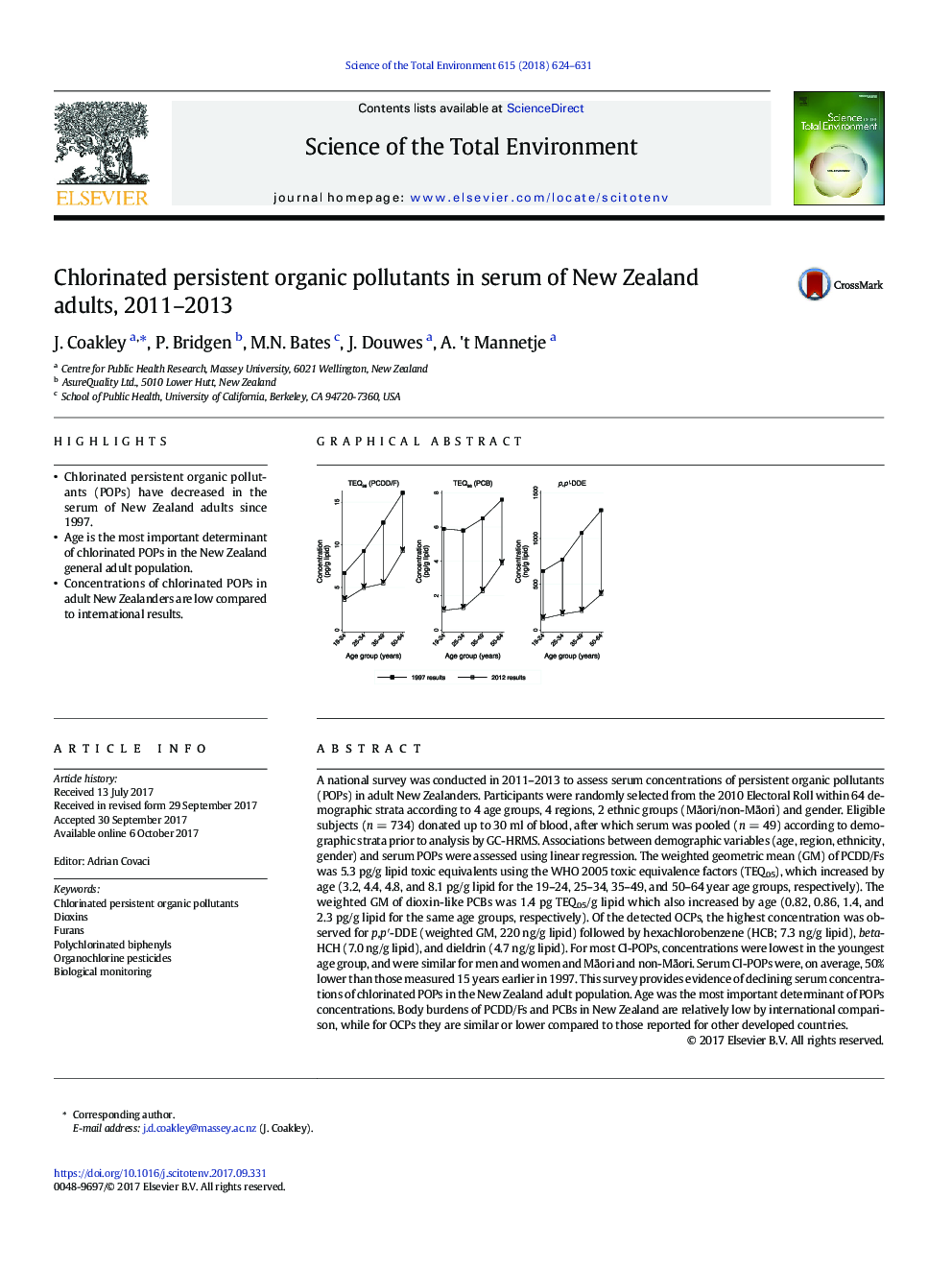| Article ID | Journal | Published Year | Pages | File Type |
|---|---|---|---|---|
| 5749819 | Science of The Total Environment | 2018 | 8 Pages |
â¢Chlorinated persistent organic pollutants (POPs) have decreased in the serum of New Zealand adults since 1997.â¢Age is the most important determinant of chlorinated POPs in the New Zealand general adult population.â¢Concentrations of chlorinated POPs in adult New Zealanders are low compared to international results.
A national survey was conducted in 2011-2013 to assess serum concentrations of persistent organic pollutants (POPs) in adult New Zealanders. Participants were randomly selected from the 2010 Electoral Roll within 64 demographic strata according to 4 age groups, 4 regions, 2 ethnic groups (MÄori/non-MÄori) and gender. Eligible subjects (n = 734) donated up to 30 ml of blood, after which serum was pooled (n = 49) according to demographic strata prior to analysis by GC-HRMS. Associations between demographic variables (age, region, ethnicity, gender) and serum POPs were assessed using linear regression. The weighted geometric mean (GM) of PCDD/Fs was 5.3 pg/g lipid toxic equivalents using the WHO 2005 toxic equivalence factors (TEQ05), which increased by age (3.2, 4.4, 4.8, and 8.1 pg/g lipid for the 19-24, 25-34, 35-49, and 50-64 year age groups, respectively). The weighted GM of dioxin-like PCBs was 1.4 pg TEQ05/g lipid which also increased by age (0.82, 0.86, 1.4, and 2.3 pg/g lipid for the same age groups, respectively). Of the detected OCPs, the highest concentration was observed for p,pâ²-DDE (weighted GM, 220 ng/g lipid) followed by hexachlorobenzene (HCB; 7.3 ng/g lipid), beta-HCH (7.0 ng/g lipid), and dieldrin (4.7 ng/g lipid). For most Cl-POPs, concentrations were lowest in the youngest age group, and were similar for men and women and MÄori and non-MÄori. Serum Cl-POPs were, on average, 50% lower than those measured 15 years earlier in 1997. This survey provides evidence of declining serum concentrations of chlorinated POPs in the New Zealand adult population. Age was the most important determinant of POPs concentrations. Body burdens of PCDD/Fs and PCBs in New Zealand are relatively low by international comparison, while for OCPs they are similar or lower compared to those reported for other developed countries.
Graphical abstractDownload high-res image (111KB)Download full-size image
